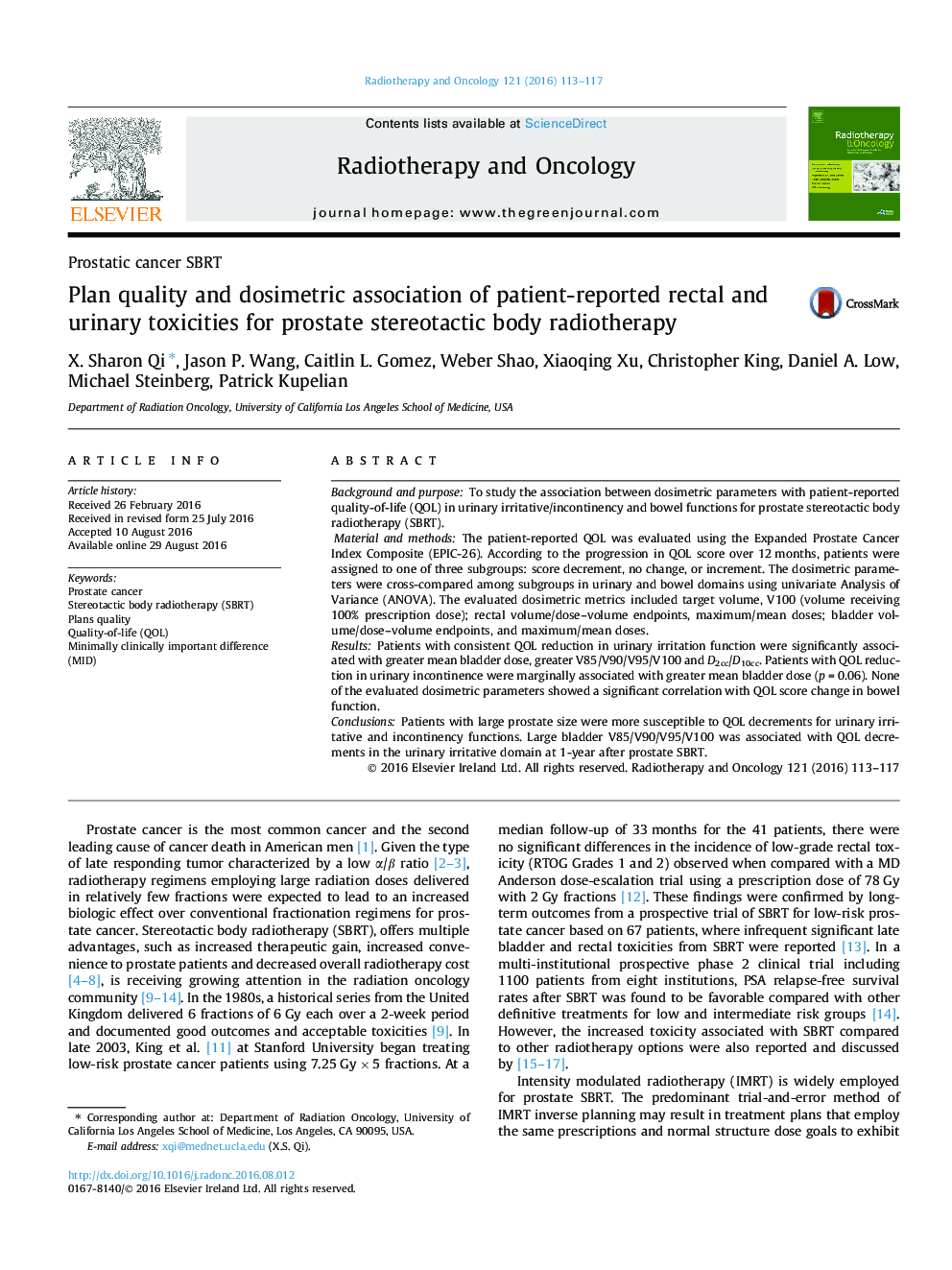| Article ID | Journal | Published Year | Pages | File Type |
|---|---|---|---|---|
| 5529804 | Radiotherapy and Oncology | 2016 | 5 Pages |
Background and purposeTo study the association between dosimetric parameters with patient-reported quality-of-life (QOL) in urinary irritative/incontinency and bowel functions for prostate stereotactic body radiotherapy (SBRT).Material and methodsThe patient-reported QOL was evaluated using the Expanded Prostate Cancer Index Composite (EPIC-26). According to the progression in QOL score over 12 months, patients were assigned to one of three subgroups: score decrement, no change, or increment. The dosimetric parameters were cross-compared among subgroups in urinary and bowel domains using univariate Analysis of Variance (ANOVA). The evaluated dosimetric metrics included target volume, V100 (volume receiving 100% prescription dose); rectal volume/dose-volume endpoints, maximum/mean doses; bladder volume/dose-volume endpoints, and maximum/mean doses.ResultsPatients with consistent QOL reduction in urinary irritation function were significantly associated with greater mean bladder dose, greater V85/V90/V95/V100 and D2cc/D10cc. Patients with QOL reduction in urinary incontinence were marginally associated with greater mean bladder dose (p = 0.06). None of the evaluated dosimetric parameters showed a significant correlation with QOL score change in bowel function.ConclusionsPatients with large prostate size were more susceptible to QOL decrements for urinary irritative and incontinency functions. Large bladder V85/V90/V95/V100 was associated with QOL decrements in the urinary irritative domain at 1-year after prostate SBRT.
